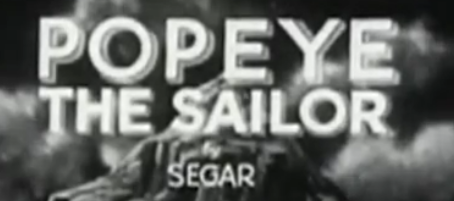In places like New York City, papers were sold to the masses at a penny a copy. Thus this era is called the Penny Press.
It’s also the era of what was called Yellow Journalism. The term arose out of a battle between newspaper barons Joseph Pulitzer and William Randolph Hearst about a comic strip character called the Yellow Kid.

A look at “clickbait” leads Columbian editor Craig Brown to examine its origins in the sensationalist Yellow Press of Pulitzer and Hearst with an etymology lesson involving the comic character.
Yellow journalism was a style of newspaper reporting that emphasized sensationalism over facts.
Carol Day, the creation of the “artist’s artist”, David Wright, was published in the Daily Mail between 10th September 1956 and 25th May 1967. The beautifully-realised strip featured the every-day adventures of a young blonde model, Carol Day, who had a wealthy uncle in the Caribbean, Marcus, who serves as her guardian and help.

John Freeman, at downthetubes, tells of Slingsby Bros, Ink! effort to collect the entirety of Carol Day (1956-1971) and bring it to fans of comic strip art. The intricate crosshatching of creator David Wright makes finding reproducible newspaper samples to present full stories much harder than, say, Andy Capp strips.
For [most] stories, we plan to use a variety of source material – original art, tearsheets, microfilm, photocopies – to put together complete or nearly complete stories.
On July 14th, 2023, the scrappy sailor man celebrates the 90th anniversary of his debut in animated cartoons. Popeye went on to star in the longest-running animated short series, with 234 episodes. Since his film debut in a 1933 Betty Boop cartoon titled Popeye the Sailor, his animated films have aired continuously all around the globe.

Popeye professor Fred M. Grandinetti celebrates 90 years of the animated Popeye (debuted July 14, 1933).
Fleischer Studios produced animated films with a grittier look depicting the streets of New York. Betty Boop was born from this era and Max Fleischer, who was a big fan of Segar’s strip, plucked Popeye, his girlfriend Olive Oyl and the brute, Bluto, from the comics page and into one of Betty’s theatrical cartoons. Due to the success of Popeye’s screen debut the sailor’s own series began three months later.
Watch the Popeye the Sailor episode of the Betty Boop cartoon series.
Since Chick Publications started in the mid 1960s, it has sold more than one billion tracts. There are two hundred and seventy different Chick Tracts … Many of these are black and white Christian horror stories that pull from a huge cast of characters: witches, bikers, Hindus, rock and rollers, Catholics, queer people, truckers, Masons and trick-or-treaters. And at some point in the tract, the protagonist often has to make a choice: either accept Jesus as their savior, or get tossed like cordwood into a Lake Of Fire.

This time our occasional look at those Jack Chick Tracts comes from 99% Invisible.
So what is it about these tiny, inflammatory comic books that has allowed them to not just survive but spread across the planet for the past 6 decades? The answer lies in the rise of the larger than life artist behind the tracts: Jack Chick. Jack died in 2016. But in life, he was the man responsible for some of the most influential and most infamous Christian lit of the 20th century.

Meet the Comic Artists – for years The Washington Post’s Suzanne Tobin sat down with cartoonists that were appearing on The Post’s funny pages and took questions from comic fans for that day’s featured creator.
Lynn Johnston, Bunny Hoest, Lance Aldrich, Nick Galifianakis, Joe Martin, Mark Tatulli, Tim Rickard, Signe Wilkinson, Bill Holbrook, John McPherson, Brian Crane, Matt Janz, and Glenn McCoy were some that joined Suzanne from 2001 – 2008. Transcripts of those sessions are now available via the Internet Archive.
hat tip: Mike Rhode

Meanwhile… at The Washington Post’s own archive, are dozens more transcripts from 2001-2002 with Jok Church, Graham Nolan, Bob Staake, Rick Kirkman, Jim Borgman, Stan Lee, Brian Walker, Bill Amend, Tom Armstrong, Mike Twohy, Dan Piraro, Woody Wilson, Jean Schulz, Rick Detorie, Hilary Price, Mort Walker, Bill Griffith, Ruben Bolling, Chris Browne, Stephan Pastis, Scott Adams, Hector Cantu and Carlos Castellanos, Jerry Scott, Bud Grace, Chip Sansom, Jim Toomey, Bil Keane, Matt Janz (again), Frank Cho, Cathy Guiswite, Bob Thaves, Mike Peters, Dave Coverly, Wiley Miller, Ray Billingsley, Brian Basset, Jeff Millar and Bill Hinds, Chris Cassatt and Gary Brookins, Patrick McDonnell, Jack Elrod, Lincoln Peirce, John Cullen Murphy, Marcus Hamilton and Ron Ferdinand, and Brian Crane (again). (whew.)
